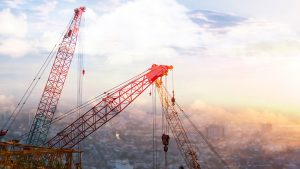Noise apps on smartphones are low cost and accessible, but they are not as accurate and precise as traditional sound level metres (SLM).
That was the message from Warren Clements, an occupational hygiene specialist with Workplace Safety and Prevention Services (WSPS), during his presentation Apps for Noise: Just a Screening Tool or Is it more than that? at the recent Partners in Prevention Conference in Mississauga, Ont.
Clements explained although noise apps can be fairly accurate, they should not be used to replace SLM, the accepted measuring tool for noise.
“The attraction of using noise apps is that many people already have a smartphone in their possession and they’re attracted to trying to evaluate the noise with their smartphone,” said Clements, adding noise apps can be used for screening purposes.
“The advantage is that they are relatively low cost and some are free. The disadvantage is some of them might not have the accuracy you would really want in the comparison tool, the traditional tool, the sound level metre.”
The SLM is referenced in the CSA Standard, but noise apps are not mentioned at all, explained Clements. He added the “green book,” the Ontario Occupational Health and Safety Act and Regulations, and specifically Ontario Reg 381/15 titled “Noise,” refer to what an employer must do if they have noise exposure, but it does not specifically address the tools to measure the noise exposure.
“You do not formally have to wear hearing protection if you are exposed below 85 dBA (decibels), but, we generally recommend that employers have people wearing hearing protection at even lower levels, just to be conservative,” said Clements in an email to the Daily Commercial News.
“If I were exposed to 82 dBA, I would wear hearing protection. I say the word ‘safe’ depends on your point of view. The green book is minimum legislative compliance requirements.”
He spoke about specific studies conducted by the National Institute for Occupational Safety and Health (NIOSH).
“Testing for apps is happening in a laboratory environment and that laboratory environment is very different from the field,” Clements pointed out.
“In the field there is varied humidity, there is varied heat, there are varied temperatures. That’s one big challenge, that the testing environment and the actual use of them is very different, so be cautious with that. Android phones with noise apps were not accurate enough to move forward in early NIOSH studies.”
The only accepted tool is a sound level metre that is calibrated and meets CSA standards
— Warren Clements
Workplace Safety and Prevention Services
All apps are also not made equal.
“You can’t accept all apps, you can’t accept all microphones, you can’t accept all smartphones — it’s select smartphones, select apps, specific external microphones that are calibrated is the winning formula to get much improved accuracy readings,” said Clements.
“If using specific iPhones, with specific noise apps, coupled with a calibrated external microphone, the accuracy met some of the criteria of the ANSI (American National Standards Institute) standards, but when I do a noise exposure assessment I must follow CSA Standard Z107.56-13. Working with WSPS, I will only use tools referred to in the CSA Standard. I do not use noise apps to measure noise exposure, not for compliance purposes.”
If you’re trying to prove or disprove compliance with a regulation, noise apps are not acceptable devices.
“If the Ministry of Labour comes onsite and tells you they must do a noise exposure assessment, the only accepted tool is a sound level metre that is calibrated and meets CSA standards,” said Clements.
“Likewise, if I have a WSIB (Workplace Safety and Insurance Board) claim, the only data that I can use to defend or confirm the WSIB claim is valid is a sound level metre, according to CSA standard.”
If you are going to use an app, make sure it’s good quality and has the occupationally relevant noise metrics, Clements advised. NIOSH decided to create its own noise app a few years ago, he added.
“The NIOSH app is one that makes the grade. It’s made by a research facility in safety and health. They acknowledge that it’s not meant to replace a traditional sound level metre but it’s worth consideration for screening purposes, not for compliance purposes.
“If you’re using an app, pair it with your smartphone with an external microphone and make sure that external microphone is also calibrated using a proper acoustical calibration tool.”










Recent Comments
comments for this post are closed